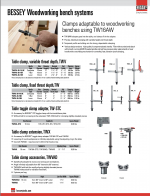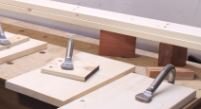Hi all,
New to the forum. Just thought id ask for some advice from folks that might have some thoughts to share.
Im planning on building a solid beech workbench, down one length will have a row of square dogs for a tail vise. As for the rest of the top, is there any reason/s why i wouldn't/shouldn't have the majority of the rest of the top drilled with the same pattern and spacing of round holes like my MFT?
Cheers
Manno
New to the forum. Just thought id ask for some advice from folks that might have some thoughts to share.
Im planning on building a solid beech workbench, down one length will have a row of square dogs for a tail vise. As for the rest of the top, is there any reason/s why i wouldn't/shouldn't have the majority of the rest of the top drilled with the same pattern and spacing of round holes like my MFT?
Cheers
Manno




